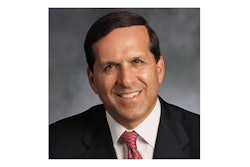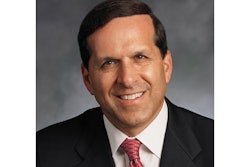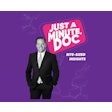Practice management is both an art and a science. You can improve the odds of having an excellent practice and maintaining it in the face of new competition and changes in the dental profession. This article will discuss 10 principles that you can use to ensure that you have a practice that is well managed, highly efficient, and experiences annual increases in practice production.
10 key principles for excellence in practice management
Clear objectives

You cannot have clear objectives unless you have specific goals. Furthermore, for goals to be effective, they must be documented, have a deadline, and be measurable.
When you have clear objectives with goals that are understood by everyone on the practice team, you then have a better understanding of how the practice operates and what it is trying to accomplish through detailed management systems.
Effective communication
Today’s dental team members don’t want to wonder what is happening, when it will happen, or if there are changes to be made. They want open, transparent, and honest communication. They also want to know how they are performing in carrying out the management systems and achieving results. This means that they need to know what the expectations and measurements of their results will be.
Strong leadership
There is no one perfect style of leadership, but developing a mentality of leading by example, having positive attitudes every day, and truly caring about your team all go a long way toward creating a foundation for any type of leadership that may be necessary.
There are strong leaders, pleasant leaders, tough leaders, and compassionate leaders. It is my belief that compassionate leaders are more successful and will retain team members longer.
Efficient resource allocation
Simply because you can state that you have, for example, a 65% overhead or a 55% overhead does not mean that you are allocating your resources properly. A simple example is that most practices, according to Levin Group data, have 15% to 20% of their current active patients on schedule for their next appointment. This alone can result in the loss of millions of dollars of revenue in a 36-year career.
When you properly understand practice resources, jobs, and expenses, you end up with a much more efficient practice that operates better and can increase its practice production every year.
Empowered team members
When team members are empowered to come to work and make decisions, this takes the pressure off doctors. Furthermore, empowered team members are motivated to perform better, stay with the practice longer, and they become experts on the practice management systems. Your ultimate goal is for team members to think like owners. We call this “ownership mentality.”
Performance metric implementation
A simpler way to say this is “know your numbers.“ There is a basic set of numbers to tell you how the practice is performing. These include production, production per day, production per hour, production per patient, production per provider, production per hygienist, number of new patients, average production for new patients, no-show percentage, last-minute cancellation percentage, collections, and collection as a percentage of overhead.
Here’s an example of why this is important. We are in an era where the compensation of team members has risen in recent years. Do you know what percentage of your revenue is spent on labor? It is the single highest expense in the practice, so having this information can help you better make critical practice decisions.
Adaptability, flexibility, and efficiency
Many dental practices get locked into the habits, rituals, and behaviors that can lead to decline. One great exercise is to list 10 improvements that the practice will make in the next 12 months. If the practice is not flexible, adaptable, and efficient, then it will gradually find more challenges regarding growth and maintaining current levels of performance.
Continuous improvement
In the 1990s, the business world went through a continuous improvement process taught by a brilliant thinker named J. Edwards Deming. Deming’s process demonstrated how businesses could mathematically analyze improvement and ensure that they were able to take continuous steps to improve.
Levin Group has found that you don’t always need to take big steps. Even small improvements gradually add up and having an improvement mentality ensures that you’re staying relevant versus maintaining outdated traditions that aren’t in the best interest of the practice.
Effective risk management
Always be careful about risk. An important aspect of risk management is having the right insurance coverage for all areas of the practice. Hopefully, you’ll never need to take advantage of your insurance, but you want to make sure it’s in place in the event of any type of negative incident.
Technology analyzation
Dentistry is improving in technology every year. Gradually, this will create high levels of efficiency through the right process of digitalization and team member training.
Practices should keep in mind that understanding which technologies will be most beneficial is important. We suggest that you analyze technologies you may want to purchase by asking if they will improve treatment, provide a return on investment, or enhance overall practice efficiency. Any technology that can help in at least two of these areas should be seriously considered.
Summary
Practice management is not easy, but it is not complicated either. It is about doing basic things really well. When the basics are in place, most practices will have excellent performance and an opportunity to rise into the top 25% of practices in regard to production and long-term success.
Dr. Roger P. Levin is CEO of Levin Group, a leading practice management and marketing consulting firm. To contact him or to join the 40,000 dental professionals who receive his Practice Production Tip of the Day, visit LevinGroup.com or email [email protected].
The comments and observations expressed herein do not necessarily reflect the opinions of DrBicuspid.com, nor should they be construed as an endorsement or admonishment of any particular idea, vendor, or organization.



















